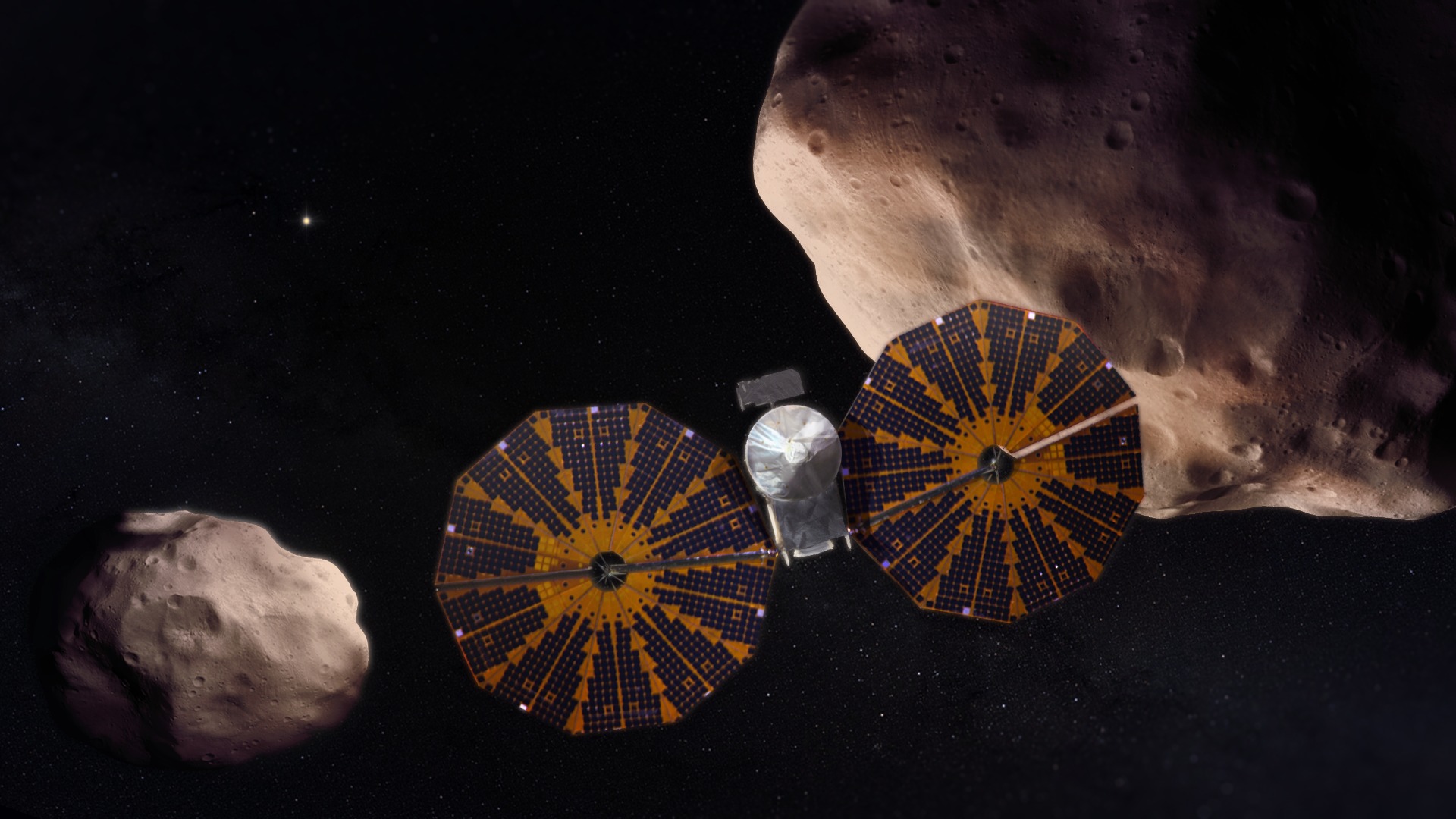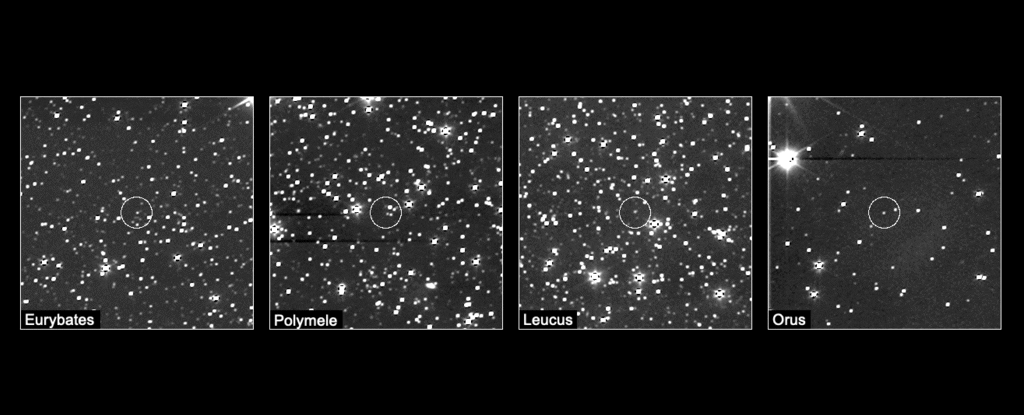The spacecraft, rushing through the Solar System, for the first time saw its targets – asteroids, to which it was sent to explore. NASA’s Lucy probe, launched in October 2021, leads the first-ever mission to study Trojan asteroids accompanying Jupiter. Of the 11 objects that it plans to visit, the device has already seen four of them: Eurybates, Polymele, Leucus, and Orus.

The images received from Lucy were taken between March 25 and 27. The spacecraft was located at a distance of more than 530 million kilometers from its asteroid targets. This is more than three times the distance between the Earth and the Sun. Each target was observed for a certain period of time: 6.5 hours for Eurybates, 2.5 hours for Polymele, 2 hours for Leucus and 10 hours for Orus.

Greeks and Trojans
Trojan asteroids are a group of space rocks that share a common orbit with Jupiter. They are divided into two populations that outpace and follow the giant planet in its orbit around the Sun. Asteroids tend to congregate in two positions of Jupiter’s orbital path at so–called Lagrange points – zones of gravitational stability created by the interaction between two bodies in the orbital system. The Greek and Trojan groups of asteroids are located at the L4 and L5 Lagrange points. Eurybates, Polymele, Leucus, and Orus belong to the Greek swarm. Lucy will visit it in 2027 and 2028.
Trojan swarms number thousands of asteroids. It is believed that they consist of the original materials from which the planets have been created at the beginning of the Solar System. NASA’s 12-year mission Lucy is to fly over and study nine of them closely, both from the Greek and the Trojan camp.
Main Belt Targets
The spacecraft also aims to study two asteroids in the Main Belt, which is located between Jupiter and Mars. Lucy’s first encounter with the asteroid (152830) Dinkinesh of the Main Belt will take place in November 2023. After this encounter, the spacecraft will return to Earth to perform a gravitational maneuver that will give it the final push to finally reach Jupiter’s orbit. After this maneuver, the probe will visit the second asteroid of the Main Belt – (52246) Donaldjohanson in 2025, and then will hold its historic meeting with Eurybates in August 2027.
Earlier we reported how Lucy impressed with a stunning view of the Earth from a distance of 620 thousand km.
According to Science Alert
Follow us on Twitter to get the most interesting space news in time
https://twitter.com/ust_magazine

